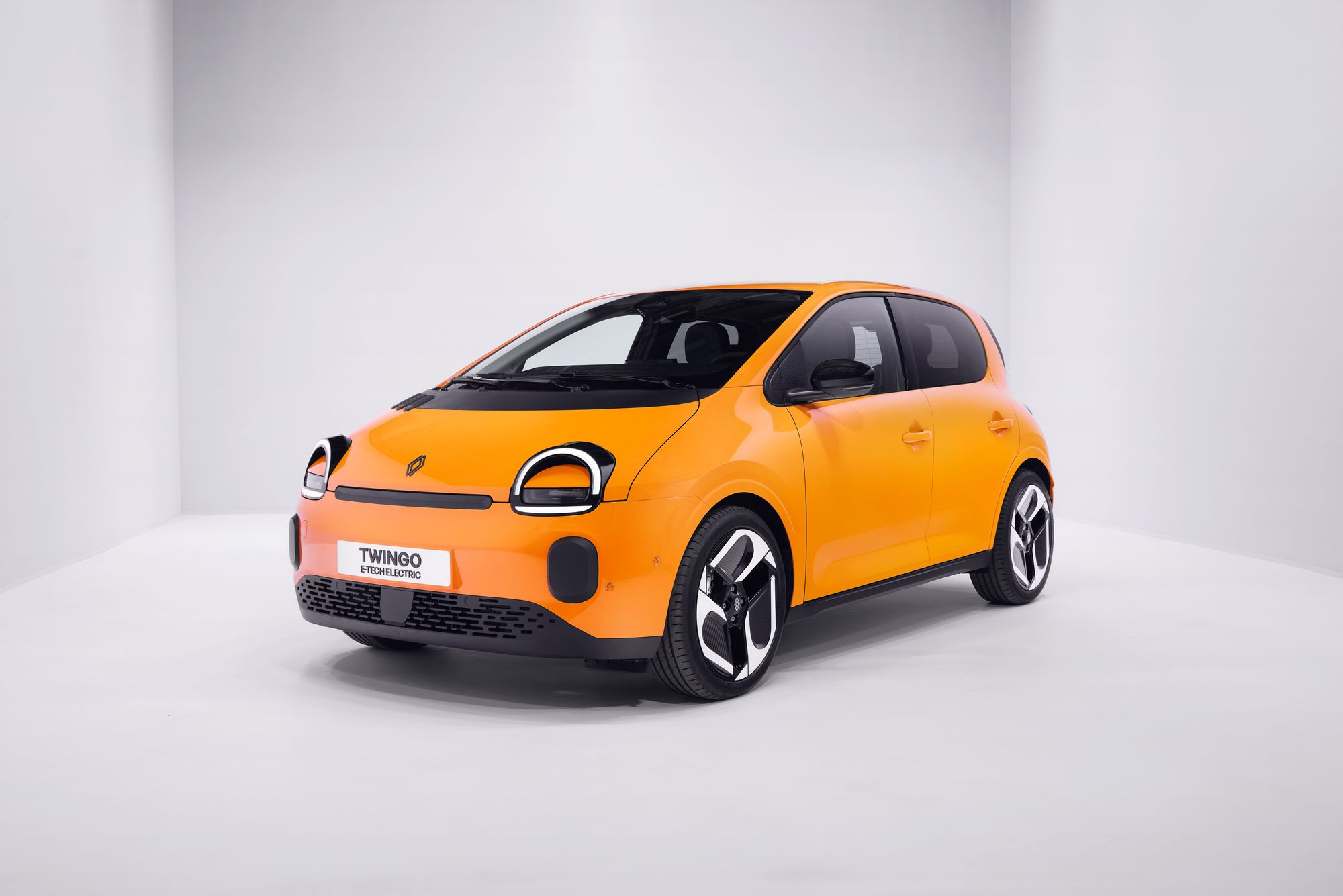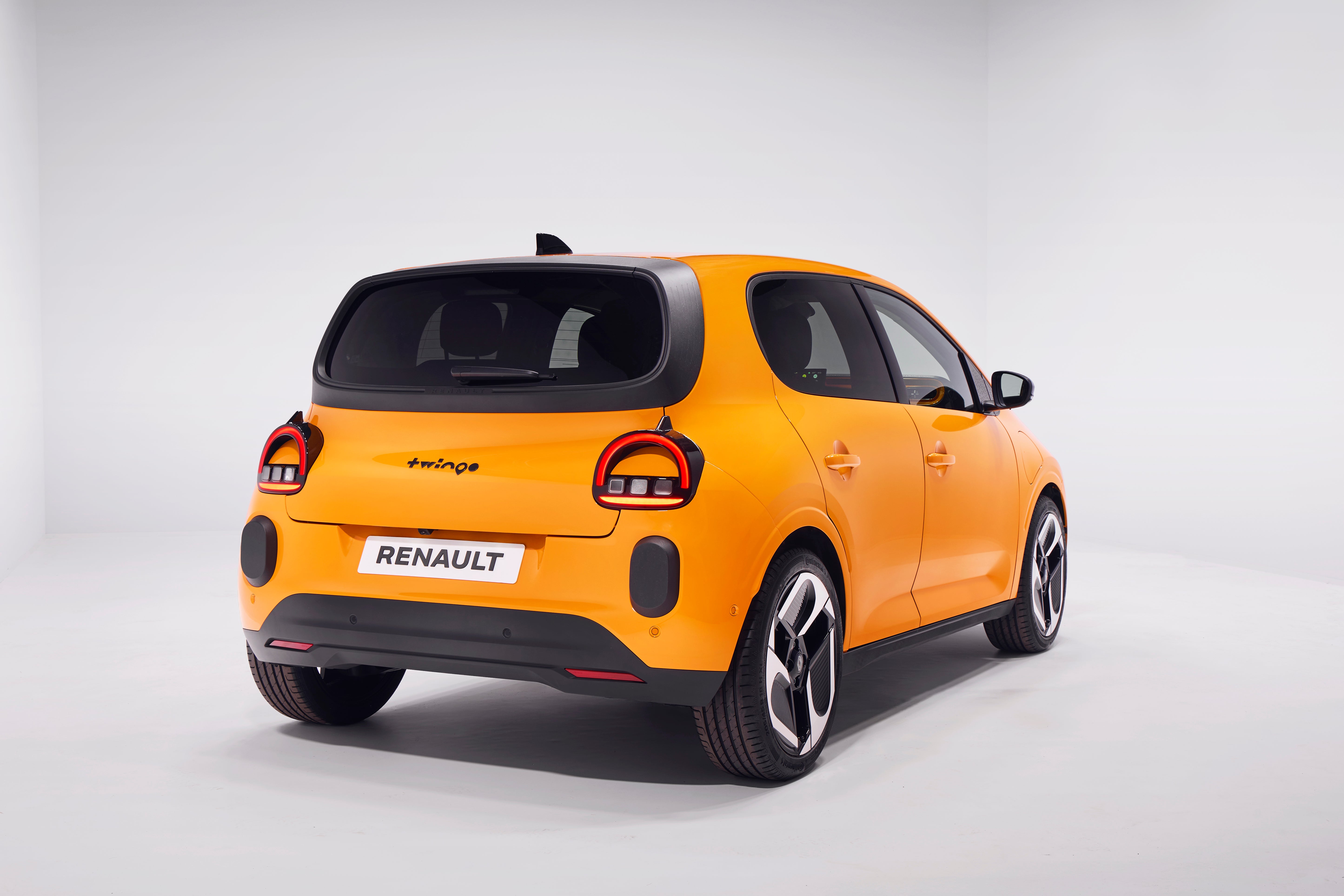Renault’s retro revolution rolls on. After the return of the Renault 5 and Renault 4, it’s now the turn of the Twingo – the cheeky little city car that charmed Europe back in the 1990s. But this time, like the 4 and 5, it’s fully electric. The Twingo is cleverly packaged, and, crucially, is aiming to be one of the most affordable electric cars on sale.
Renault says the new Twingo was designed with simplicity in mind – not just in styling, but a…
Renault’s retro revolution rolls on. After the return of the Renault 5 and Renault 4, it’s now the turn of the Twingo – the cheeky little city car that charmed Europe back in the 1990s. But this time, like the 4 and 5, it’s fully electric. The Twingo is cleverly packaged, and, crucially, is aiming to be one of the most affordable electric cars on sale.
Renault says the new Twingo was designed with simplicity in mind – not just in styling, but also in how it’s built and how customers will use it. Every line and detail has been engineered to deliver maximum charm and minimum cost.

The new Renault Twingo is the latest retro-futuristic model in Renault’s line-up (Renault)
The starting price is expected to be £20,000 when it goes on sale next year, while it’s built in Slovenia’s Novo Mesto plant and will be the first model in Renault’s “Leap 100” programme, developed in just 100 weeks – half the time it normally takes to create a new car.
The original 1992 Twingo was a quirky, loveable one-box city car that became a European hit, selling more than 4.1 million units in 25 countries – but was never available in the UK. Us Brits are just going to have to use our imaginations – we won’t understand all of the retro references – but we can still enjoy the new Twingo’s sense of fun and friendliness.
Twingo design project director Paula Fabregat-Andreu said, “Our main aim in designing this modern-day Twingo was to recapture the bold spirit of the first generation – bright and cheerful, with curvy lines and huge, impish eyes that give it a vibrant personality and a unique character.”
Job done, then. The Twingo E-Tech electric certainly looks the part. And at 3.79 metres long, it’s small by modern standards but sits on a stretched 2.49 metre wheelbase, meaning there’s decent space inside.

The back of the new Renault Twingo features half-moon lights, as does the front (Renault)
Renault’s design team describe the Twingo as “a bubble of energy” – and it’s hard to disagree. The front features arched daytime running lamps with a narrow bank of headlights underneath, all underlined by another LED line for the indicators. There’s a subtle smile-shaped grille, and playful colour-coordinated details. Around the back, half-moon tail-lamps echo the front, while aerodynamic ‘bat-ear’ fins on top of the lights aid aerodynamics and a cheeky re-imagined Twingo badge in a bespoke font complete the look.
Buyers will get to choose from four colours such as Absolute Red, Absolute Green and Mango Yellow, all reinforcing the car’s upbeat personality, with a black also available if you really want it.
One of the less successful throwbacks to the original is the three plastic stripes on the bonnet, behind one of which sits the washer fluid filler. The only trouble is, you need a special key to unlock it (you can’t open the bonnet) which surprisingly doesn’t attach to any of the clever clips around the car, but will either roll about in the glovebox or get lost with the tyre inflation kit in the boot. If you have a 3D printer, you might be able to make a fortune helping Twingo owners out who lose the key to get to the washer fluid filler!

Get your charger and tariff now. Save happily EV after.
T&Cs apply
ADVERTISEMENT

Get your charger and tariff now. Save happily EV after.
T&Cs apply
ADVERTISEMENT

The new Renault Twingo may be cheap, but it still gets twin digital screens and a cute interior (Renault)
Despite its pint-sized footprint, Renault promises interior space comparable to a car from the segment above – and they’re not wrong. The Twingo will only seat four, but two independent sliding rear seats – a signature of the original – come as standard on all versions, each moving by 17 cm to prioritise legroom or boot space. The rear seatbacks also recline and fold individually, creating a flat floor and more than 1,000 litres of load volume when needed. Boot capacity stands at 360 litres with the seats up.
The ‘monospace’ shape of the new Twingo, carried over from the orginal, means the bonnet slopes down sharply at the front, so you’re not going to see the nose of the car from the driver’s seat. I also found the windscreen a bit shallow – as it is in the Renault 5 and 4, a characteristic of the platform that all three retro Renaults (and the new Nissan Micra) all use.
Space is as good as promised, though. At close to six foot tall, I managed to sit behind the driver’s seat that I’d set for me, although my knees were splayed a bit. It’ll be absolutely fine for smaller people, and even I’d be happy in the back if the journey wasn’t too long.
Inside, the Twingo’s cabin continues the playful theme, with oblong motifs and colour accents matching the exterior paint. The dashboard design appears to float, and there’s a nod to the original car with a big red hazard-light button in the centre. Kids can even have fun staring at the ceiling where the alphabet is spelled out in the special Twingo font.

The new Renault Twingo is a four seater, but the seats fold and slide forwards to give more boot space (Renault)
The cabin features dual digital screens – a 7in driver display and a 10in central touchscreen – running Renault’s latest OpenR Link infotainment system. The top-spec Techno trim gets Google built-in, including Maps with an EV route planner, Google Assistant voice control, and access to more than 100 apps via the Google Play store. The experience is accompanied by a fun Jean-Michel Jarre-composed welcome soundtrack.
Under the pretty skin, the Twingo E-Tech electric uses Renault’s AmpR Small platform, which also underpins the Renault 5 E-Tech. Power comes from a 81bhp electric motor and a 27.5 kWh LFP (Lithium Iron Phosphate) battery – the first time Renault has used this chemistry. LFP batteries are cheaper and use abundant materials like iron and phosphate, avoiding rarer metals such as cobalt and nickel. Renault says the setup helps cut battery costs by around 20 percent and reduces the car’s carbon footprint by 60 percent compared with a similar petrol model.
That tiny battery gives the Twingo a claimed maximum range of 163 although that’s likely to drop to around 150 if you go for the optional 18in wheels. The cars we saw were all on the bigger wheels, but we got a glimpse of the standard 16in wheel trims, which, in my view, aren’t pretty and don’t look a bit plain on the funky Twingo body.
The Twingo is expected to charge from 10 to 80 percent in 30 minutes using a 50 kW DC fast charger, while an 11 kW AC bidirectional system supports V2L (vehicle-to-load) and V2G (vehicle-to-grid) functions, allowing it to power household appliances or return electricity to the grid.

The new Renault Twingo is just 3.79m long and will comfortably seat four people (Renault)
Performance is city-focused: 0–31 mph in 3.85 seconds and 0–62 mph in 12.1 seconds, with a top speed of 81 mph. The car’s 9.87-metre turning circle makes it nimble in tight streets, while the one pedal driving mode (standard on Techno trim) simplifies stop-start traffic.
For such a small car, the new Twingo is packed with big-car technology. Depending on trim, it offers up to 24 driver-assistance systems, including adaptive cruise control with Stop & Go, lane-keeping assist, rear cross-traffic alert, automatic emergency braking, and hands-free parking – a first for this segment. There’s also occupant safe exit alert to warn of oncoming cyclists or traffic when opening doors.
The car is part of Renault’s Human First Programme, which includes innovations like Fireman Access for battery fires, QRescue QR-code identification for emergency services, and a driver-monitoring system using a camera to detect fatigue or distraction. Six airbags are standard.
Owners can monitor charging and maintenance schedules via the My Renault smartphone app, which also allows remote pre-heating on cold mornings. There’s access to more than a million charging points across Europe through the Mobilize Charge Pass network.
Renault is keeping the range simple. The entry-level Evolution model includes the dual-screen setup, smartphone connectivity (Apple CarPlay and Android Auto) but via a wire rather than wireless (to keep costs down), cruise control, automatic emergency braking, and those signature sliding rear seats. The Techno adds the full OpenR Link with Google, the Reno virtual assistant, one pedal driving, adaptive cruise, climate control, automatic wipers and lights, six-speaker audio, and a digital rear-view camera.
That European production base, along with the use of LFP batteries, plays a big part in Renault’s effort to deliver a sub-£20,000 EV that can compete directly with small petrol cars on price.
However, it’s going to be very easy to spend more than £20,000 on a Twingo. Stepping up from Evolution to Techno trim costs £2,000 in the Renault 5 so expect the same on a Twingo, while adding the sexier 18-inch wheels will push the price up further.
Then there are the myriad accessories that Renault will try to sell you, all cleverly fitting into or onto clips around the car. A fold-away parcel shelf will be extra, while clever storage boxes and even holders for your cable to connect your smartphone to the car will all be available.
It’s hoped that the Twingo will qualify for the government’s £1,500 Electric Car Grant, as the Renault 5 does, which will bring the starting price down to a tempting £18,500. But the biggest problem the Twingo may have is the fabulous Renault 5 with its starting price (including the grant) of £21,495 with a longer 192-mile range.